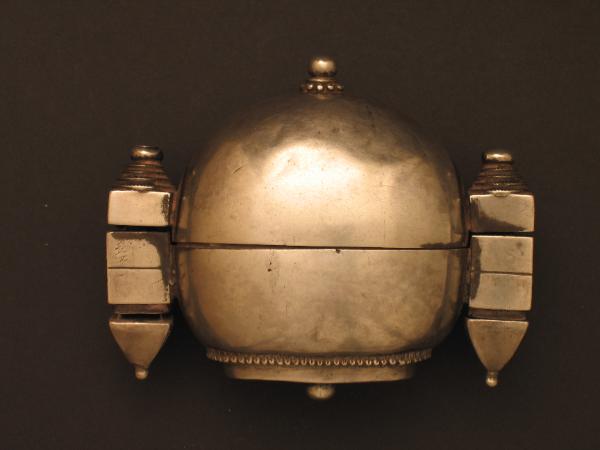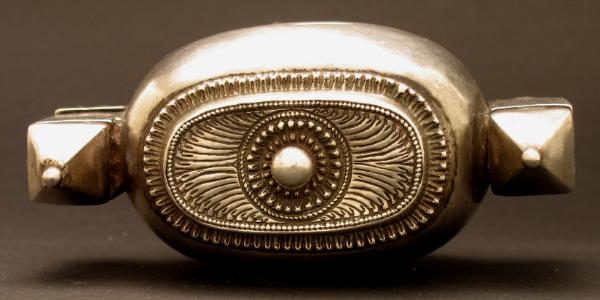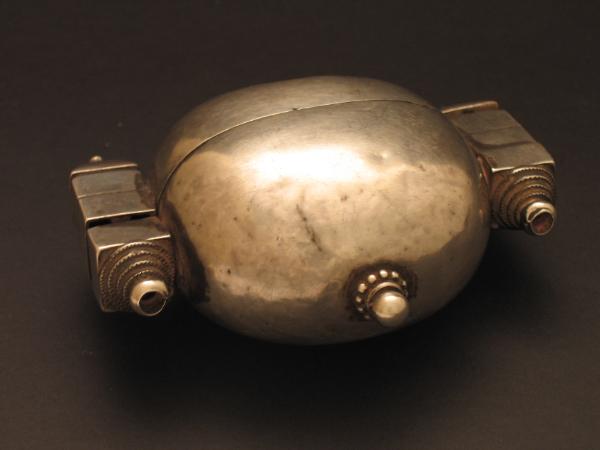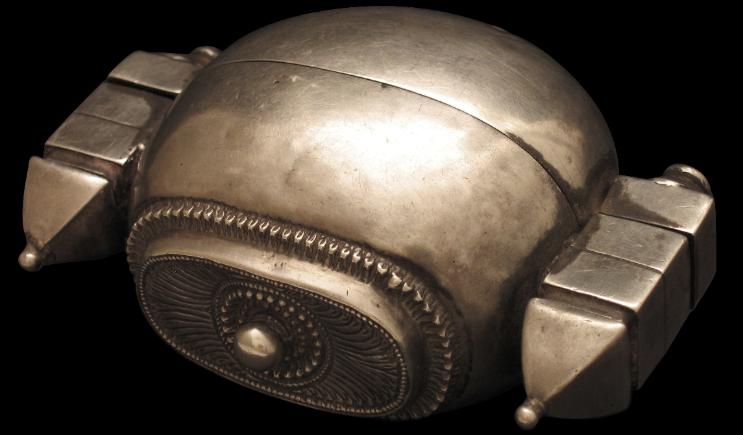
Large Antique Silver Lingam Box, India
Large Silver Lingam Box (Ayigalu)
South India
19th century
length: 11.2 cm; height: 9 cm, weight: 202g
This silver lingam box is unusually large. Of spherical form with an elaborate cast and engraved base, it would have been suspended from a necklaces of pure silver plaited wire, and worn by a wealthier lay member of the Lingayat sect. (Poorer adherents wore wooden lingam boxes.) It has been fashioned in two parts that are held together when the box is suspended from the necklace.
This box once carried a jangama lingam. Such lingams comprise a small piece of stone carved by specialist carvers that is then covered in a dark, protective compound called kauthi. This comprises a mix of lac, clay, sacred cow dung ashes, and marking-nut tree fruit juice or black antimony powder (also used as an eyeliner cosmetic.)
The Lingayat sect became prominent in the twelfth century as a reaction to Brahmanism. Many Lingayats today live in Karnataka, Maharashtra and Tamil Nadhu. The sect rejects the supremacy of the Brahmans; denies polytheism and acknowledges Shiva as the one true god thus rejecting Brahma and Vishnu. It rejects caste distinctions, rebirth, pilgrimages, temple worship and sacrifice; does not burn its dead but buries them; does not allow child marriage, and does allow widows to remarry.
The Lingayats believe movable lingams to be the only true symbol of Shiva. Individuals are initiated into the sect as they enter adulthood. A consecrated lingam uniquely created for each initiate is presented by a community guru amid prayers and ritual. The lingam is created only for the individual and must be protected and guarded, hence the need for a protective box as shown here. All Lingayats carry their personal lingam with them at all times. After death they are buried in a sitting position with the lingam in the left hand.
References
More information on the Lingayats can be found in Utracht, O., Traditional Jewelry of India, Thames & Hudson, 1997, p. 133.
Inventory no.: 251
SOLD




